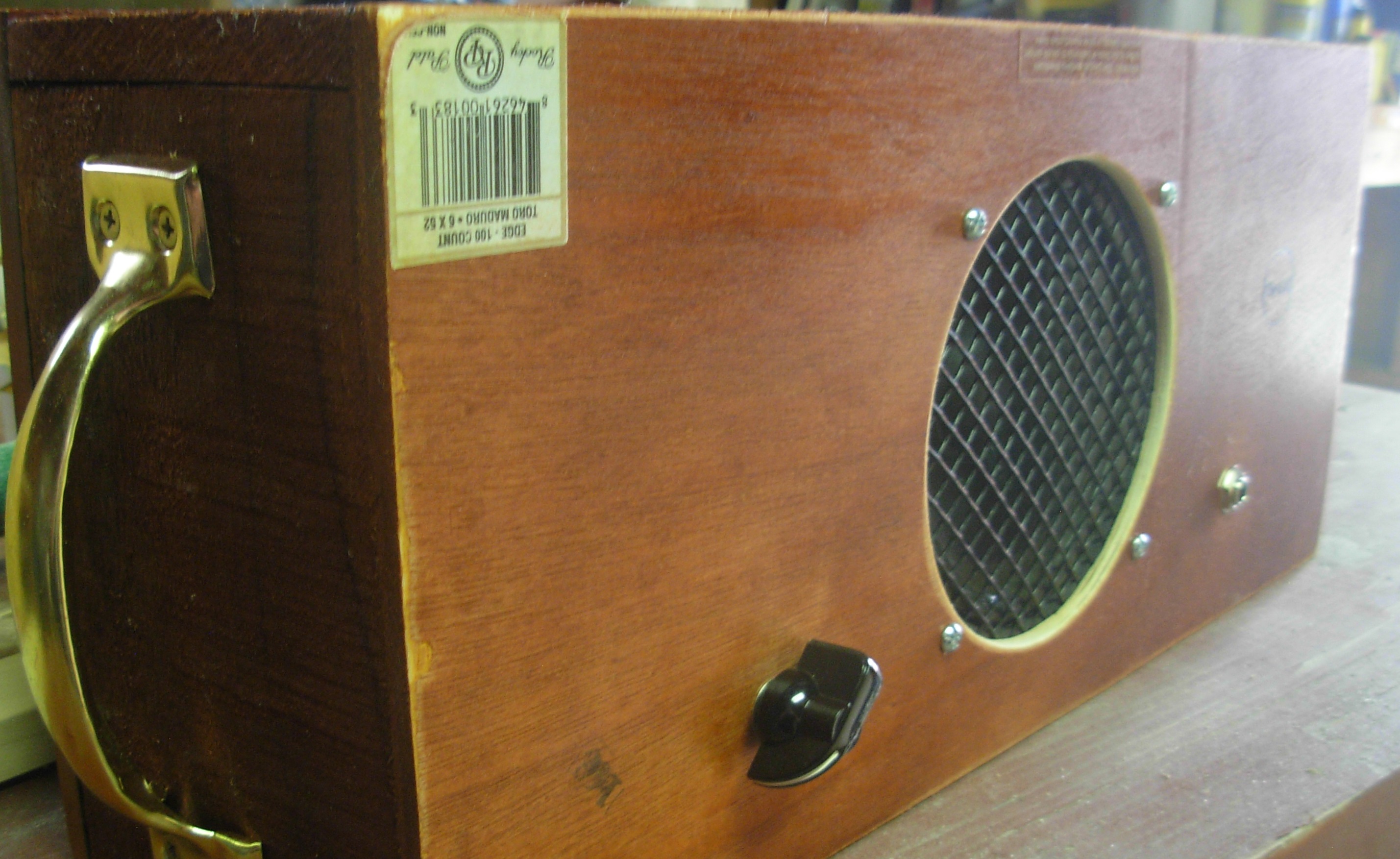How to Build a Cigar Box Guitar Amp

Built yourself a cigar box guitar, eh? Chances are, you'll want to plug it in and annoy your neighbors. So let's build a cigar box guitar amp!
There are two kits, or amp modules, I'd recommend for making your first cigar box amp.
The first is C.B. Gitty's 2.5w amp kit (Check out photos below of the step-by-step build). The second is a Low Voltage Audio Amplifier NJM386D LM386, which can be found on eBay and similar sites.
They both work great, and I've used them regularly when making these mini-amps of mayhem. Some of the advantages of the C.B. Gitty kit is that it has everything you need to make an amp. All the wires are neatly labeled so you don’t have to worry about reading a diagram, and it has a gain pot that can be adjusted with a screwdriver to give your amp a dirty tone.
The NJM386D LM386 module costs a little less, but by the time you buy a speaker, jack, volume knob and 9-volt battery lead, they are practicality the same price. The NJM386D LM386 module is a no-solder kit as well, so you can just connect your leads to the chip using a small screwdriver.
Tools you will need:
- Soldering iron and solder
- A drill and drill bits
- A hole saw (that matches the size of your speaker)
- Sandpaper
- Screwdriver
- Safety goggles
- Gloves
- Not-so-common common sense.
Some Quick Tips
All the latest guitar news, interviews, lessons, reviews, deals and more, direct to your inbox!
I tend to use old book-shelf stereo speakers in cigar box amps. A bigger speaker = bigger sound, plus the only way to open most of the speaker cabinets is to crack them open with a hammer. It's great fun and works wonders for stress relief (Kids, don't go smashing your parents speakers! Instead, pick one up at your local thrift store).
For a grill cover I use a gutter guard, the likes of which you can find at your local hardware store. It looks cool and it's really inexpensive.
To keep the bolts on your speaker from rattling around, put a small bead of hot glue on the thread of the bolt after you have tightened them down. It will keep everything nice and quiet.
Before we dive in to our amp project, let's talk about some cigar box guitar bands that “go to 11.”
The first band is Shane Speal's Snake Oil Band. You might remember Shane from some of my earlier columns, although he's using a Musicvox MVX-15 Spaceranger tube amp (It's a pretty freaking sweet amp if you ask me) in lieu of a cigar box amp. It's too damn cool not to talk about it.
Below is a track from their album, Holler, a mix of blues riffs, field chants and classic rock fuzz that gets your foot stomping.
I had a chance to catch one of their shows last year, and what a show it was: cigar box guitar, washboard, harmonica, washtub bass, confetti cannons, rubber chickens ... Well, see for yourself:
Next, the Lo-Fi Project (Yeah, it's my band), reviewed as “a cross between the hard electric blues of Muddy Waters and raw punk angst of the Sex Pistols' first album, Never Mind the Bollocks."
Well, that’s good enough for me.
Check our the photo album below to walk you through step-by-step of building your cigar box amp!
How do these amps sound, you may ask? Here's a video sent to me by JT Woodruff of Hawthorne Heights. It's a clip of one of my amps he was using in the studio.
'Til next time, keep on playing!
Brian Saner owns Saner Cigar Box Guitars, which makes custom handmade guitars and amps using local dry-aged wood in every guitar. These guitars are handmade and might have imperfections, but that's what makes them unique. Check out his cigar box guitar band, the Lo-Fi Project. Get a cigar box guitar of your own at sanercigarboxguitars.com, devildownrecords.com and Main Street Gallery. Check out his Facebook page.













